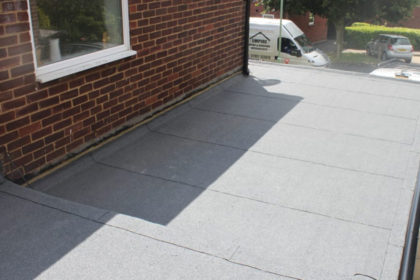 Everything You Should Know About Waterproof Flat Roofs
Everything You Should Know About Waterproof Flat Roofs
Compared with pitched roofs, flat roofs have a reputation for leaking very easily. It’s easy to see why this would be the case. Even though “flat” roofs aren’t completely flat, it’s a lot harder for water to run off. That means it tends to pool, allowing it to work its way through the materials.
That’s why it’s especially vital to waterproof a flat roof. The good news, though, is that modern materials include extremely effective waterproofing for flat roofs.
Why Do Flat Roofs Need to Be Waterproofed?
Like any roof, a large part of a flat roof’s job is to keep out the weather from the building below it. Rain is an especial problem, partly because water can be very efficient at finding its way in, and partly because of the damage water can do if it gets in.
One effect of water getting through your flat roof will be to rot the roofing timbers. By that time, though, it will have already worked its way down into the rooms below, causing damp patches, mould or mildew. The last two pose a particular danger since, besides making living conditions unpleasant, the spores they give off can cause serious health problems, especially to anyone who suffers from asthma or another respiratory issue.
How to Identify Leaks in Your Flat Roof
The simplest way to identify that your flat roof is leaking is to find a drip inside. To pinpoint it on top of the roof, measure the distances from where the water is falling to the walls and then repeat the measurement on the roof itself. If you have a good ladder and are properly equipped to use it, you can do this yourself, as long as you’ve made sure the roof is built to take your weight. If you have any doubts, you’ll need to get a professional.
Things to look out for on your flat roof include ponding. If water has gathered in a single place on your roof and is still there after 48 hours, it could start stressing the membrane, gradually creating cracks. Blisters in the membrane and “alligator” patterns appearing could also lead to extra stress and maybe cracks.
Waterproofing Your Flat Roof
If you’re having a new roof installed, then you can ensure right away that it includes a waterproof membrane. The most efficient type is a triple layer of felt, with the middle layer fully waterproof and the lowest layer breathable, preventing condensation in the spaces below the roof.
If the existing roofing felt has already begun to split, there are various products available that can be painted over the cracks to create a waterproof seal. However, if you have a number of cracks, it can be both a longer-term solution and more cost-effective to coat the whole roof with Liquid Rubber roofing. This is very easy to apply over almost any surface and will provide a waterproof seal that will last for a long time. And it’s both a low-cost and an eco-friendly solution, too.
While you may be able to inspect your flat roof yourself, if you’re an expert DIYer, all actual roofing work should be left in the hands of professionals. Give us a call to find out how we can help you waterproof your flat roof.
Learn here how to know if your guttering is working after winter.









